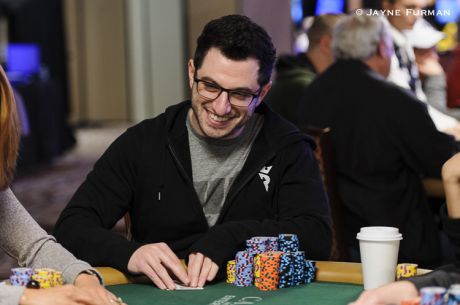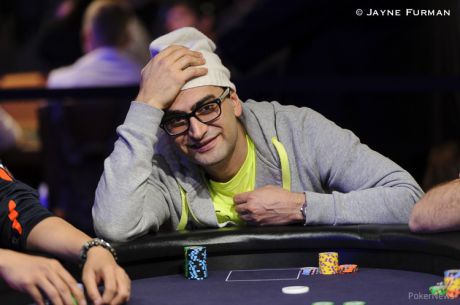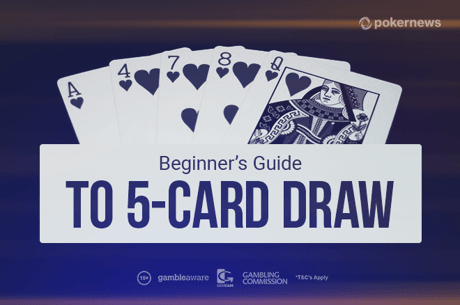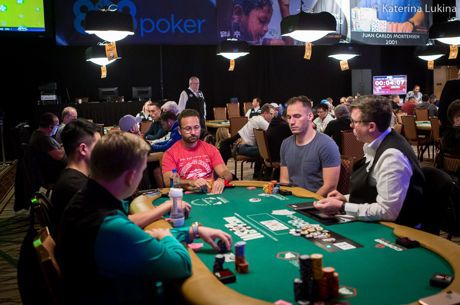Thinking Outside the Hold��em Box: Dealer��s Choice
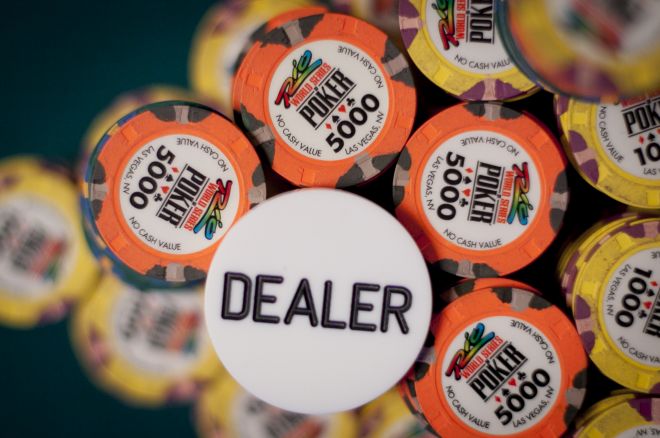
Last year��s first-ever ��Dealer��s Choice�� event at the World Series of Poker saw Robert Mizrachi overcome a substantial chip deficit against eventual runner-up Aaron Schaff to capture his second gold bracelet. (Mizrachi has since won a third WSOP title this summer.) Other bracelet winners at that six-handed final table included Frank Kassella, Daniel Idema, and Bill Chen.
There were 419 players in the $1,500 buy-in event, and given all the positive feedback from players last year regarding the Dealer��s Choice, it was not at all surprising to see the event��s return to the 2015 WSOP schedule. Event #52: $1,500 Dealer��s Choice begins this afternoon, and with interest in mixed games steadily growing, the turnout should challenge or exceed last year��s total.
Furthermore, 2015 marks the introduction of a new $10,000 Dealer��s Choice Championship at the WSOP (Event #67), which begins July 3. As for big buy-in events, it is also rumored that, the $50,000 Poker Players Championship perhaps in the future might adopt the Dealer��s Choice format.
In Dealer��s Choice, players take turns selecting a game (from a list of pre-approved games) to play for one orbit. Unlike other multi-variant mixes such as H.O.R.S.E. or the 10-Game mix where the order of games to be played in a rotation is predetermined, in Dealer��s Choice the games played at any given table will depend on the players at that table and their particular game preferences.
Allowing individual players to select which games are to be played from orbit to orbit has an interesting impact on game dynamics that is unique to this type of event. Players often need to balance a number of considerations in their game selection strategy, including what they believe their strongest games to be, what they think the weakest games of the particular opponents at their table are, and relative stack and blind sizes, to name a few.
In fact, the ability to assess quickly and accurately the relative level of expertise of one��s opponents in each of the different disciplines would undoubtedly be an extremely valuable skill for any player to have in a Dealer��s Choice tournament.
In this article, we briefly introduce the 19 different games on this year��s Dealer��s Choice line-up at the WSOP. For ease of reference, we��ve grouped the games into five general categories. Basic tips and strategies for some of these games can be found in earlier Thinking Outside the Hold��em Box articles.
1. Hold��em variants
We��ve been thinking outside the ��hold��em box�� these last few weeks, but we might as well start with the three hold��em variants included in the 19-game ��Dealer��s Choice�� menu. Most readers are no doubt familiar with hold��em games where players are dealt two hole cards with which they try to make the highest-ranking five-card hand along with the five community cards shared by all players.
The main difference between the three variants noted above is the betting structure employed. Whereas in no-limit hold��em there is no limitation on the amount that can be wagered at any given time, there are restrictions on the sizes of bets and raises in both the limit and pot-limit variations of the game.
Here��s a tip �� Be aware that the value of speculative hands (e.g., small pocket pairs and suited connectors) diminishes as greater restrictions are placed on bet sizes. These types of hands rarely make winning hands often enough to justify the potential return.
For example, while there certainly will be situations where playing a hand such as 5?3? in NLHE can be very lucrative �� you may be able to win the entire stack of an unsuspecting opponent on a favorable board �� in limit hold��em the pots won will typically be much smaller even if you happen to make the best hand. The limit structure can also sometimes make it more difficult to execute bluffs successfully when you miss.
2. Omaha variants
In the first four games listed above, players are each dealt four hole cards rather than two, and as is the case with NLHE a board of five community cards is dealt that is shared by all players. Further, when constructing a hand in any Omaha variant, players must use exactly two of their hole cards �� no more no less �� along with three community cards when constructing a five-card hand.
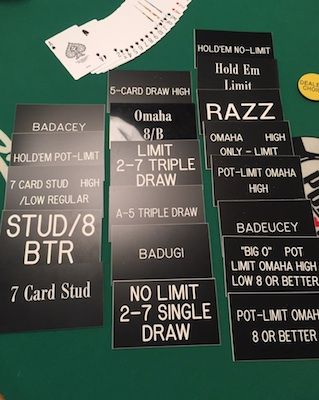
In the ��High�� versions of these games, players aim to make the highest-ranking five-card hand (using standard poker rankings), whereas in ��Hi-Low�� versions half the pot is awarded to the best high hand while the other half is awarded to the best qualifying eight-or-better low hand (check out my previous Omaha Hi-Low article for a discussion of low hand rankings).
Big ��O�� is the newest addition to the Dealer��s Choice slate of games. It is an action-packed variation of PLO, played with five hole cards rather than four. This is the first time this cash-game import has been spread at any WSOP bracelet event.
Here��s a tip �� Be aware that the more hole cards that are dealt to each player, the stronger the hands that can be made will be. In other words, in Omaha games NLHE players will need to adjust their expectations of what they consider to be strong hands.
For example, flopped bottom sets and straights are not as strong in Omaha variants as compared to NLHE and can easily be overvalued, especially when the player��s hand affords no possibility for improvement to an even stronger hand and the pot is being contested multi-way.
3. Stud variants
These stud variants in the Dealer��s Choice slate of games all follow a fixed limit betting structure. In stud games, players are dealt their own individual boards of cards �� each player receives two hole cards face down, four cards face up and visible to all, and a final card face down for a total of seven cards.
In razz, the object is to make the lowest five-card hand from a player��s seven available cards (we discussed basic strategies in ��Thinking Outside the Hold��em Box: Razz��). In seven-card stud, the object is to make the highest five-card hand, using standard poker rankings.
In seven-card stud hi-low, half the pot is awarded to the highest hand (as in seven-card stud), while the other half is awarded to the lowest hand. In the ��no qualifier�� version of this game, the pot is always split between the best low and high hands, whereas the ��eight-or-better�� version institutes a low hand qualifier: if no low hand better than 8-high can be made, then the best high hand wins the entire pot.
Here��s a tip �� Pay attention to the upcards of your opponents at all stages of a hand. Against opponents who are contesting the pot with you, nearly two-thirds of their boards will become visible, allowing you to assess the range of hands they are likely to hold.
It is also important to take note of the upcards of players who fold at some point after the initial deal. For example, if you are drawing to a straight or a flush and you see that many of your outs have been already exhausted, you should take that information into account when determining whether or not to continue pursuing your draw.
4. Single Draw variants
In both of these games, there is no cap on the maximum amount of any given wager, similar to NLHE. That said, despite this lack of a restriction on bets and raises, as there are only two betting rounds these games are usually not as volatile as other pot-limit or no-limit poker variants.
In both each player is dealt five hole cards. There is a pre-draw betting round, followed by a single drawing round, then a final betting round.
These two variants can generally be thought of as opposites of one another. In five-card draw, players are trying to make the highest five-card hand, with standard poker rankings used; in 2-7 draw, players aim to make the lowest five-card hand. As discussed in my earlier 2-7 draw article, aces count as high, undesirable cards in all ��deuce-to-seven�� games, and flushes and straights are similarly unwanted.
Here��s a tip �� The value of position in these games cannot be overemphasized. Since none of your opponents�� cards are visible, the only concrete information you will typically gain regarding the strength of their hands is the number of cards drawn. Playing in position can, for instance, provide you with options in situations where you are faced with a choice to keep certain cards, or discard them in an attempt to make a better hand.
Also, you will find that it is difficult for players to make very strong hands when only a single draw is available. On average, hands such as two pair or even an unimproved big pair will win a fair share of pots in five-card draw. See my 2-7 draw article (linked to above) for a discussion of expected hand strengths for that game.
5. Triple Draw variants
In 2-7 and A-5 triple draw, players are each dealt five cards, and have three drawing opportunities to try to make the lowest possible hand. The difference between the two variants lies in the ranking system used.
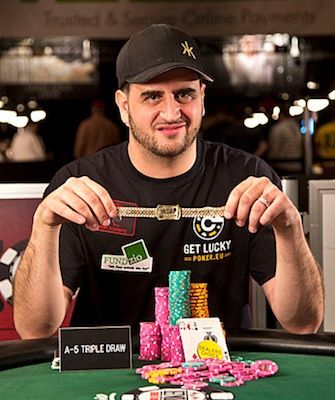
As noted in my earlier 2-7 triple draw article, aces are undesirable cards, and flushes and straights count against hands. By contrast, in A-5 triple draw, aces count as low, desirable cards, and straights and flushes are ignored. Therefore, Ax2x3x4x5x (regardless of suits) is the best hand in A-5 triple draw.
In Badugi, players are also given three drawing opportunities to make a low hand, but only four cards are dealt to each player in that game. As discussed in my previous article, the object of Badugi is to try to make the lowest possible hand consisting of four uniquely ranked cards with all four suits represented.
Badeucy and Badacey are both cash-game favorites that made their debut at the WSOP last year in the Dealer��s Choice event, and both are split-pot versions of regular Badugi. Like 2-7 and A-5 triple draw, each player is dealt five cards, and there are three drawing opportunities. Badeucy is best considered a variation of 2-7 triple draw (think ��deuce��), while Badacey can be considered a variation of A-5 triple draw (think ��ace��).
In Badeucy, one-half of the pot is awarded to the best, five-card 2-7 triple draw hand, whereas in Badacey that same half of the pot is awarded to the best, five-card A-5 triple draw hand instead. The other half of the pot in both Badeucy and Badacey is awarded to the best Badugi hand that can be made from a player��s five cards (i.e., the four lowest cards unique in rank and in suit, or fewer if only incomplete Badugi hands can be made).
Here��s a tip �� In ��deuce-to-seven�� games such as 2-7 Triple Draw and Badeucy, most playable starting hands will include a deuce, since most of the highest-ranking low hands contain a deuce.
Also, in split-pot variants such as Badeucy and Badacey, having low-ranked rainbow cards in a starting hand is extremely valuable �� if you improve to a strong Badugi hand quickly, you may well have several ��free�� chances to improve to a sufficiently strong five-card hand that could earn you the entire pot.
Ken Lo is the author of A Poker Player��s Guide to Mixed Games: Core Strategies for HORSE, Eight-Game, Ten-Game, and Twelve-Game Mixes. He is based in Toronto, Canada. Follow him on Twitter @ppgmg.
Want to stay atop all the latest in the poker world? If so, make sure to get PokerNews updates on your social media outlets. Follow us on Twitter and find us on both Facebook and Google+!
In this Series
- 1 Thinking Outside the Hold��em Box: Limit Omaha Hi-Low Split (Eight-or-Better)
- 2 Thinking Outside the Hold��em Box: Razz
- 3 Thinking Outside the Hold��em Box: No-Limit Deuce-to-Seven Single Draw
- 4 Thinking Outside the Hold��em Box: Deuce-to-Seven Triple Draw
- 5 Thinking Outside the Hold��em Box: Badugi
- 6 Thinking Outside the Hold��em Box: Dealer��s Choice

